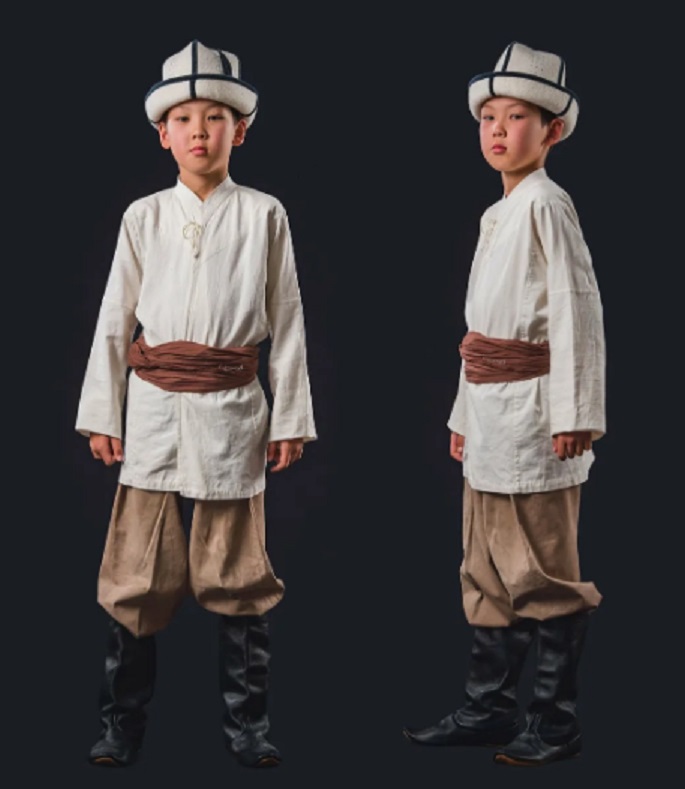
Among the herders in northern Kyrgyzstan, felt clothing in the form of a kementai cloak was common. In the south, we noted only a few centers of its distribution in the past. For example, in the Soviet district, the elders from the Adigine group wore such clothing made from dark felt, but covered on top with fabric produced at home. According to the stories of elder Umurzaly Toktonazarov (from the village of Uulu in the Aravan district), "kementai" was sewn in both white and dark colors.
It was primarily worn by shepherds during the cold season. It can be assumed that this type of clothing, characteristic of the northern complex, had a certain prevalence among the ancestors of the Kyrgyz living in the eastern part of the Osh region.
In the warm season, a common form of clothing for older men is the single-breasted light robe called zhe lek. According to informants, it appeared in southern Kyrgyzstan about eighty years ago. It was sewn from white handwoven cotton fabric. Now it is made from factory-produced dense fabrics in light and dark tones or striped.
It can be sewn with or without a lining. The robe fastens with buttons using sewn or buttonhole loops. Usually, these robes have one or two horizontally placed patch pockets, but some are made without them.
Depending on the collar shape, there are two varieties of this clothing: with an open collar, like a "chapana," and with a closed low standing collar (called kesme; see fig. 138).
The "jeleks" of the latter form are common in the eastern part of the Osh region; it is identical to the clothing called beshmant, which is worn by northern Kyrgyz.
Previously, a short (knee-length) garment called keltche served as the outerwear. Now it is rarely worn and is put on by elderly men and women (see fig. 147). It is made from dense dark fabric and is always quilted. The front panels, back, and sleeves are cut separately. The sleeves are long with a slightly rounded armhole. The collar has two options, as in the previously described "jeleks": open and closed with a low stand. The "keltche" fits snugly and fastens with sewn loops on three to six buttons. It is made with horizontally placed patch pockets.
This clothing likely did not have widespread distribution among the southern Kyrgyz, as it was unknown in some areas.
We have noted its existence among the groups of tboulos, mungush, adigine, and mongoldor.
Kyrgyz tulup











































